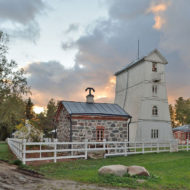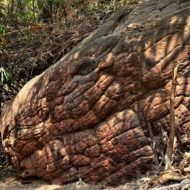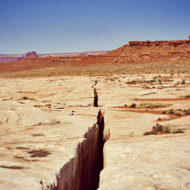King Alfred’s Tower is a decorative tower in the parish of Brewham, Somerset, in south-west England, United Kingdom.
Henry Hoare II planned the tower in the 1760s to commemorate the end of the Seven Years’ War against France and the accession of George III near the location of the ‘Egbert Stone’, where Alfred the Great, King of Wessex, met the Saxons in May 878 before the important Battle of Edington. The tower was badly damaged by a plane crash in 1944 and was restored in the 1980s.
The 49m high triangular tower has a hollow center and is climbed to its top via a spiral staircase on one of the corner ledges. It includes a statue of King Alfred and a dedicatory inscription above the entrance door.
The tower stands on Kingsettle Hill and is Grade I listed on the National Foundation for Places of Historic Interest or Natural Beauty.
In 1986, the tower was renovated. It is now owned by the National Trust and is open to visitors who can climb the 205 steps.
Access : Coordinates: 51.114827, -2.365045 / King Alfred’s Tower located in Brewham Parish in the English county of Somerset.
Highlights :
- The tower is mentioned in Thomas Hardy’s poem “Channel Firing”, written in April 1914, as a place “inland”.
- There are several inscriptions on the Stourhead Estate. The inscription on the tower was drawn up in 1762 and placed in 1772.
- The tower is close to the site of the ‘Egbert’s Stone’, where Alfred the Great, King of Wessex is said to have gathered the Saxons in May 878 before the important Battle of Edington (historically known as the Battle of Ethandun), where the Danish army, led by Gutrum the Elder, was defeated. It is the start of the 45.1 km Leland Trail, a trail that runs from King Alfred’s Tower to Ham Hill Country Park.
Go next : Bath , a historic spa city famous for its hot springs and the largest city in the county of Somerset.















